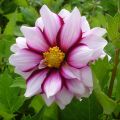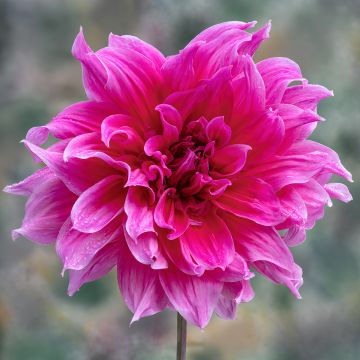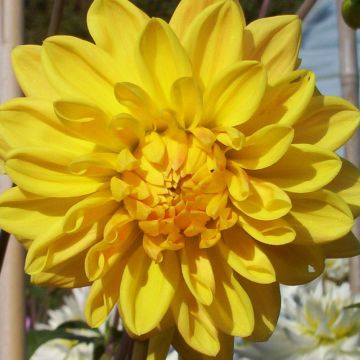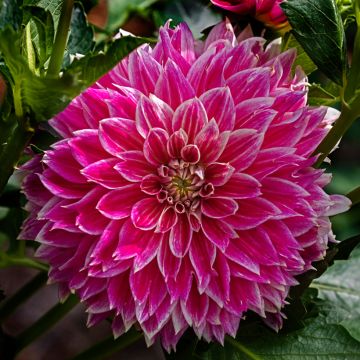

Collection Dahlias pourpres et blancs
Best Value Dahlia Collection (purple and white)
Dahlia Edge of Joy, Rebecca's world, Mystery Day
Dahlia
No dahlia has shot up, not even a tiny shoot.
Alizée , 02/12/2023
This plant carries a 6 months recovery warranty
More information
We guarantee the quality of our plants for a full growing cycle, and will replace at our expense any plant that fails to recover under normal climatic and planting conditions.
From €5.90 for pickup delivery and €6.90 for home delivery
Express home delivery from €8.90.
Does this plant fit my garden?
Set up your Plantfit profile →
Collection items (3 plants)
Description
Discover our best value collection of 3 two-coloured Dahlia varieties, in shades or white and purple. Their flowers, with a range of different shapes and sizes, brilliantly interpret the combination of these two contrasting tones in their own way. These Dahlias flower abundantly for 4 months, from July until the first frosts. The purple and white combo, both whimsical and romantic, brings unique charm to any flower bed or bouquet. A small touch of pink or blue will enhance your composition, both in the garden or in a vase.
This collection includes:
-1x Decorative Dahlia 'Edge of Joy': quite unique and truly original, it produces 8 cm (3in) flowers that are open, semi-double, swirling, mostly two-coloured, in shades of white, pink, mauve, purple, deep fuchsia to magenta. Height: about 90 cm (35in)
-1x Dahlia 'Rebecca's World': dozens of 13 cm (5in) flowers, semi-cactus type, either plain or two-coloured, purple and white, variegated or speckled, all different on the same plant. Height: about 1.10 m (4ft)
-1x Dahlia 'Mystery Day': irresistible flowers, reaching 20 cm (8in) in diameter, two-coloured, fully double, blooming in a striking explosion of colours from wine-red to dark purple and pure white. A flower of excellent durability, on a stem reaching 1 m (3ft) in height.
To encourage reblooming, make sure to remove faded flowers, or even better, regularly make large and colourful bouquets by combining them with other varieties. With their brilliant two-coloured flowers, the dahlias in this collection match particularly well with white, pale blue, or pink flowers. They will be enhanced by the blue of delphiniums and the vivid green of lady's mantle. In flower beds, plant them alongside asters, for example, which bloom at the same time, or grasses, at their peak of beauty. They also help enhance bouquets later in the season. In a vase, the purple and white flowers of these dahlias will look stunning with grey foliage, the plumes of pampas grass, or the purple tones of 'Velvet Curtains' prince's feathers (amaranths).
A star plant of borders and herb gardens, Dahlias confidently mix with beautiful flowers, and look equally good alongside vegetable plants. In Mexico, this tuber was initially cultivated as a root vegetable for consumption. However, its poor taste qualities assigned it the rank of an ornamental plant. Since then, the interest in their beautiful exuberance has never waned.
Report an error about the product description
Plant habit
Flowering
Foliage
Botanical data
Dahlia
Edge of Joy, Rebecca's world, Mystery Day
Asteraceae
Dahlia
Cultivar or hybrid
Other Dahlia A to Z
Planting and care
Plant your dahlias in the spring, in deeply loosened soil that has been enriched, for example with crushed horn or dehydrated blood. Place the tubers and break up the soil to fill the hole while avoiding air pockets. Your dahlia should be covered with 6 cm (2in) of soil. After planting, add one litre of water. Water regularly during the first 6 weeks to help with rooting.
Dahlias are sensitive to cold; they need to be overwintered indoors. In November, the first frost will blacken the foliage: that's the moment to dig them up. Carefully dig up the tubers and remove as much soil as possible. Let the foliage dry, so that the tuber can replenish its reserves. When the foliage is dry, cut the stems 10 cm (4in) away from the tuber. Spread the tubers in a box, on a sheet of newspaper. Store away from frosts in a dry, cool, and dark place.
Planting period
Intended location
Care
-
, onOrder confirmed
Reply from on Promesse de fleurs
Dahlias
Haven't found what you were looking for?
Hardiness is the lowest winter temperature a plant can endure without suffering serious damage or even dying. However, hardiness is affected by location (a sheltered area, such as a patio), protection (winter cover) and soil type (hardiness is improved by well-drained soil).

Photo Sharing Terms & Conditions
In order to encourage gardeners to interact and share their experiences, Promesse de fleurs offers various media enabling content to be uploaded onto its Site - in particular via the ‘Photo sharing’ module.
The User agrees to refrain from:
- Posting any content that is illegal, prejudicial, insulting, racist, inciteful to hatred, revisionist, contrary to public decency, that infringes on privacy or on the privacy rights of third parties, in particular the publicity rights of persons and goods, intellectual property rights, or the right to privacy.
- Submitting content on behalf of a third party;
- Impersonate the identity of a third party and/or publish any personal information about a third party;
In general, the User undertakes to refrain from any unethical behaviour.
All Content (in particular text, comments, files, images, photos, videos, creative works, etc.), which may be subject to property or intellectual property rights, image or other private rights, shall remain the property of the User, subject to the limited rights granted by the terms of the licence granted by Promesse de fleurs as stated below. Users are at liberty to publish or not to publish such Content on the Site, notably via the ‘Photo Sharing’ facility, and accept that this Content shall be made public and freely accessible, notably on the Internet.
Users further acknowledge, undertake to have ,and guarantee that they hold all necessary rights and permissions to publish such material on the Site, in particular with regard to the legislation in force pertaining to any privacy, property, intellectual property, image, or contractual rights, or rights of any other nature. By publishing such Content on the Site, Users acknowledge accepting full liability as publishers of the Content within the meaning of the law, and grant Promesse de fleurs, free of charge, an inclusive, worldwide licence for the said Content for the entire duration of its publication, including all reproduction, representation, up/downloading, displaying, performing, transmission, and storage rights.
Users also grant permission for their name to be linked to the Content and accept that this link may not always be made available.
By engaging in posting material, Users consent to their Content becoming automatically accessible on the Internet, in particular on other sites and/or blogs and/or web pages of the Promesse de fleurs site, including in particular social pages and the Promesse de fleurs catalogue.
Users may secure the removal of entrusted content free of charge by issuing a simple request via our contact form.
The flowering period indicated on our website applies to countries and regions located in USDA zone 8 (France, the United Kingdom, Ireland, the Netherlands, etc.)
It will vary according to where you live:
- In zones 9 to 10 (Italy, Spain, Greece, etc.), flowering will occur about 2 to 4 weeks earlier.
- In zones 6 to 7 (Germany, Poland, Slovenia, and lower mountainous regions), flowering will be delayed by 2 to 3 weeks.
- In zone 5 (Central Europe, Scandinavia), blooming will be delayed by 3 to 5 weeks.
In temperate climates, pruning of spring-flowering shrubs (forsythia, spireas, etc.) should be done just after flowering.
Pruning of summer-flowering shrubs (Indian Lilac, Perovskia, etc.) can be done in winter or spring.
In cold regions as well as with frost-sensitive plants, avoid pruning too early when severe frosts may still occur.
The planting period indicated on our website applies to countries and regions located in USDA zone 8 (France, United Kingdom, Ireland, Netherlands).
It will vary according to where you live:
- In Mediterranean zones (Marseille, Madrid, Milan, etc.), autumn and winter are the best planting periods.
- In continental zones (Strasbourg, Munich, Vienna, etc.), delay planting by 2 to 3 weeks in spring and bring it forward by 2 to 4 weeks in autumn.
- In mountainous regions (the Alps, Pyrenees, Carpathians, etc.), it is best to plant in late spring (May-June) or late summer (August-September).
The harvesting period indicated on our website applies to countries and regions in USDA zone 8 (France, England, Ireland, the Netherlands).
In colder areas (Scandinavia, Poland, Austria...) fruit and vegetable harvests are likely to be delayed by 3-4 weeks.
In warmer areas (Italy, Spain, Greece, etc.), harvesting will probably take place earlier, depending on weather conditions.
The sowing periods indicated on our website apply to countries and regions within USDA Zone 8 (France, UK, Ireland, Netherlands).
In colder areas (Scandinavia, Poland, Austria...), delay any outdoor sowing by 3-4 weeks, or sow under glass.
In warmer climes (Italy, Spain, Greece, etc.), bring outdoor sowing forward by a few weeks.

























































